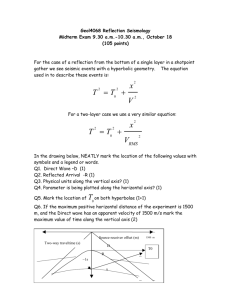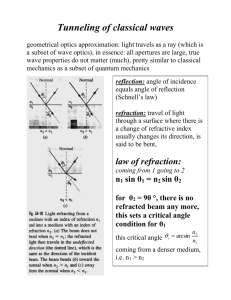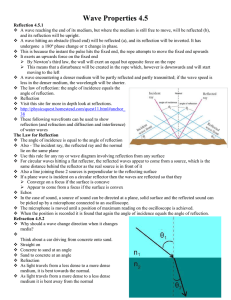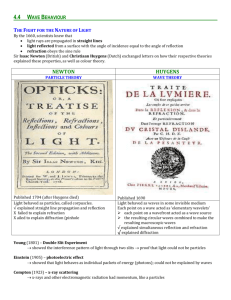Wave Behavior Notes
advertisement
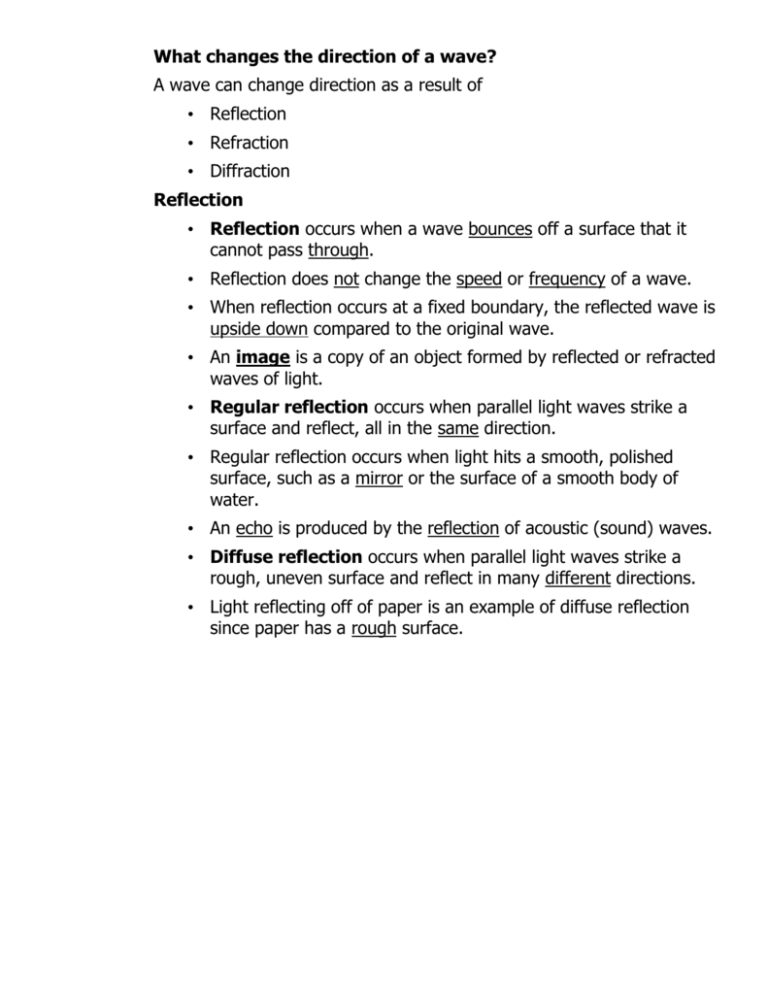
What changes the direction of a wave? A wave can change direction as a result of • Reflection • Refraction • Diffraction Reflection • Reflection occurs when a wave bounces off a surface that it cannot pass through. • Reflection does not change the speed or frequency of a wave. • When reflection occurs at a fixed boundary, the reflected wave is upside down compared to the original wave. • An image is a copy of an object formed by reflected or refracted waves of light. • Regular reflection occurs when parallel light waves strike a surface and reflect, all in the same direction. • Regular reflection occurs when light hits a smooth, polished surface, such as a mirror or the surface of a smooth body of water. • An echo is produced by the reflection of acoustic (sound) waves. • Diffuse reflection occurs when parallel light waves strike a rough, uneven surface and reflect in many different directions. • Light reflecting off of paper is an example of diffuse reflection since paper has a rough surface. Refraction • Refraction is the bending of a wave as it enters a new medium at an angle. • Refraction occurs because a wave’s speed changes as it enters a new medium. When the wave enters a new medium at an angle, one side of the wave moves at a faster speed than the other side. • Water waves refract when they enter shallower water at an angle. In this case, water depth acts like a different medium. • Light waves refract when the light enters a new medium at an angle, such as when light travels from air to water. Diffraction • Diffraction is the bending of a wave as it moves around an obstacle or passes through a narrow opening. • A wave diffracts if its wavelength is large compared to the size of an obstacle or opening. • If its wavelength is small compared to the size of an obstacle or opening, the wave bends very little. • Scattering is the redirection of light in all directions as it passes through a medium. For example, light is scattered by small particles and gases in the air as it passes through the atmosphere. • Gas molecules scatter shorter-wavelength blue light more than the light of longer wavelengths. This explains why the sky appears blue on a sunny day.


